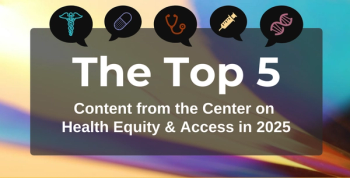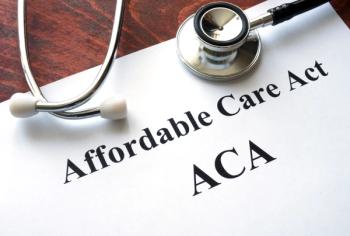
High Deductibles Cause Low-Income People With Diabetes to Forego Medical Care
Providers who treat people with diabetes have observed the phenomenon of low-income patients who need a lot of medical care not having enough information to choose policies that meet their needs.
A study published this week in a major diabetes journal has confirmed what physicians have been sharing in sessions at medical conferences in recent years: the rise of high-deductible plans is changing the behavior of those with diabetes and limited means, causing them to cut corners with some care.
The past 2 meetings of the American Diabetes Association Scientific Sessions have been marked by stories of patients deferring care, about struggles to pay for insulin, and by tales of interruptions in the Medicare supply chain for diabetes test strips, which CMS denies in a
ADA’s journal, Diabetes Care, found that complaints about the test strip availability had validity in a
Led by David L. Rabin, MD, MPH, the study used data from the 2011-2013, Medical Expenditure Panel Survey to evaluate demographic status, medical service use, and health status among all privately insured adults with diabetes aged 18 to 64 years. They were grouped according to those who were below 200% of the federal poverty level (FPL) and those above that level, and by whether they had no deductible, a low deductible (less than $1000 for an individual or $2400 for a family), or a high deductible (above $1000 for an individual or above $2400 for a family).
Compared to those with no deductible, privately insured persons with diabetes and a low deductible reported decreases in services: 27% fewer primary care visits, 39% fewer checkups, and 77% fewer specialty care visits. For those with a high deductible, the decline was even greater: the decreases were 42%, 65%, and 86%, respectively.
Among those with higher incomes, the decreases were highest for specialty care (28%) and emergency department visits (37%).
Diabetes care measures were similar by income and by insurance type; however, deferred service was twice as high for those who had medical debt and lower income. “These patients are more likely to report forgoing needed medical services,” the authors wrote.
The phenomenon of patients who end up in high-deductible plans that may not be appropriate for their medical needs is much discussed among those who care for patients with diabetes. This August, during a session on
What was needed, she said, was help for patients with diabetes to select benefit designs that were more appropriate for people who use a lot of medical care.
Reference
Rabin DL, Jetty A, Petterson S, Saqr Z, Froehlich A. Among low-income respondents with diabetes, high-deductible versus no-deductible insurance sharply reduces medical service use [published online December 12, 2016]. Diabetes Care. 2016;
Newsletter
Stay ahead of policy, cost, and value—subscribe to AJMC for expert insights at the intersection of clinical care and health economics.








































